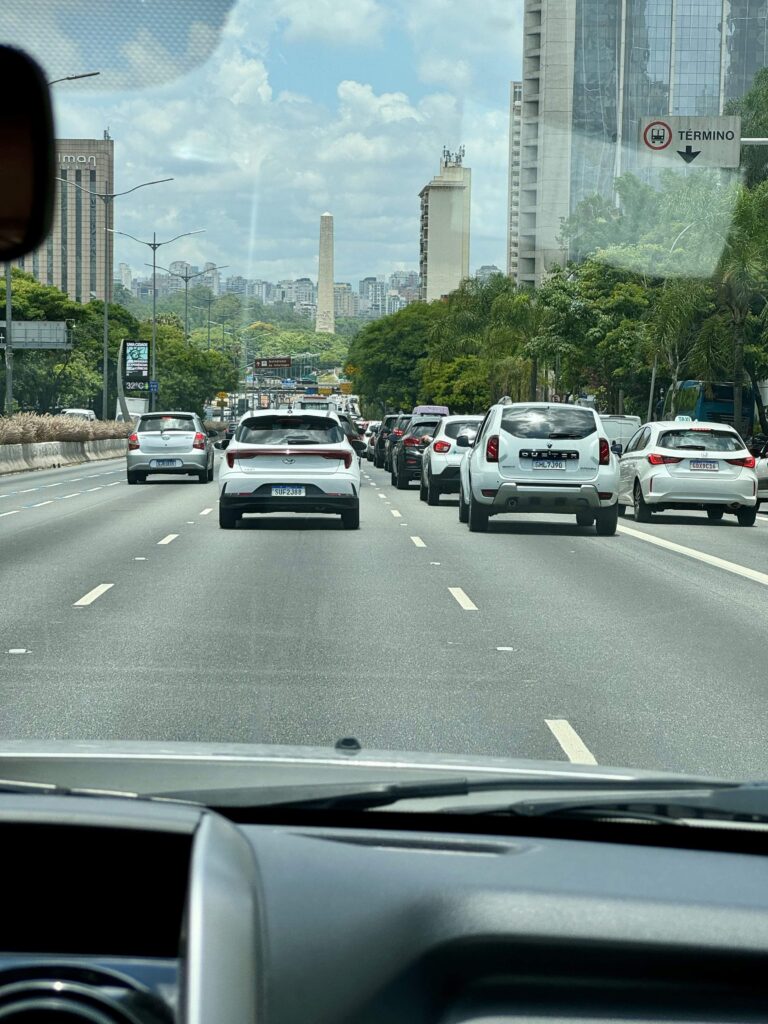Brazil’s automotive industry represents a significant segment of its national economy and serves as a vital engine for development and technological advancement. Historically, the industry has been shaped by various protectionism and import-substitution policies, particularly up until the 1980s. Since then, the market has undergone substantial liberalization, allowing for greater foreign investment and leading to a more competitive and dynamic environment. Today, Brazil stands out as one of the largest car producers in the world, with a well-established position in the South American market.
Despite facing challenges such as the COVID-19 pandemic—which posed production and supply chain disruptions—the Brazilian automotive industry has shown resilience and a capacity to recover. The sector continues to evolve, integrating new technologies and adapting to global trends, including a shift towards cleaner and more sustainable vehicle production. As a result, the ability of the industry to adapt and innovate remains pivotal to its current and future success.
Table of Content
ToggleKey Takeaways
- Brazil’s automotive industry plays a critical role in the country’s economy, owing to its historical development and liberalization.
- Resilience in the face of challenges, including the COVID-19 pandemic, underscores the industry’s adaptability.
- Technological integration and a shift towards sustainability are key trends shaping the future of the Brazilian automotive sector.
History and Evolution of the Car Industry in Brazil
The car industry in Brazil is a dynamic sector shaped by government policies, economic fluctuations, and collaborations with global automakers. This rich heritage highlights the country’s journey from modest beginnings to becoming a notable player in the global automotive landscape.
Establishment and Growth
The Brazilian automotive sector commenced with entrepreneurs and innovators such as Romi, who released the Romi-Isetta in the 1950s, the country’s first car. During this era, key players like Vemag and Gurgel emerged, capitalizing on the local engineering talent and contributing to the initial domestic industry setup. By the 1960s and 1970s, Gurgel was recognized for creating vehicles suited to Brazil’s varied terrain.
Economic Policies and Impact
The leadership of President Fernando Collor de Mello in the early 1990s marked a significant shift with the introduction of protectionist policies. These protectionist strategies aimed to shield domestic manufacturers from international competition and encourage local production. As a result, the automotive sector saw a blend of state-driven incentives and market-oriented reforms which were instrumental in shaping the industry’s trajectory. These policy changes also paved the way for the rise of some unique brands like Troller, well-known for off-road vehicles, and Miura, which gained attention in the 1980s and 1990s.
Global Partnerships and Domestic Brands
Brazil’s automotive industry has also benefited from global partnerships. Foreign direct investment and technology transfer have been critical in boosting the sector’s capabilities. Striking a balance, domestic brands have striven to carve out their niche, often focusing on market segments that reflect the versatility and robustness required by Brazilian consumers. Such strategic alignments have not only fostered local entrepreneurship but have also integrated domestic brands into the global automotive supply chain.
Current Automotive Production and Sales Trends
The Brazilian automotive industry has witnessed varying shifts in production and sales. These dynamics reflect broader economic trends, manufacturers’ strategic decisions, and technological advancements.
Major Manufacturers’ Presence
In Brazil, prominent global automotive manufacturers such as General Motors, Volkswagen, and Toyota maintain a significant production footprint. Fiat, now part of the multinational conglomerate Stellantis, continues to be a key player in the market. BMW, Hyundai, Kia, and Ford Motor Company also assert their presence, contributing to the competitive landscape. These manufacturers have navigated the Brazilian market’s fluctuations, adapting production to meet demand and overcoming logistical challenges.
Vehicle Production Statistics
ANFAVEA reports that the year 2022 witnessed fluctuations in automotive production with some manufacturers seeing growth in the face of economic headwinds. For instance, Chevrolet and Volkswagen have leveraged their established facilities to respond to market demands swiftly. December often sees a surge in production as manufacturers ramp up to meet year-end sales targets and refresh inventories with newer models for the upcoming year.
New Passenger Car Registrations
Sales statistics in December 2022 highlight the enduring popularity of brands such as Fiat and Volkswagen, both known for producing models that resonate with Brazilian consumers. The growth in new car registrations is indicative of recovering consumer confidence and a steady economic improvement. Brands like Toyota, Honda, and Renaulthave seen a positive uptick in registrations, owing to their commitment to launching vehicles that cater to the preferences of the local market. Others, including Nissan, Peugeot, and newly launched models from Kia, endeavor to capture a larger share of new registrations through strategic marketing and competitive pricing.
Export Dynamics and International Trade
Brazil’s automotive industry has experienced a shift toward greater exportation, becoming an influential player in international trade. The sector is not only pivotal in exporting passenger vehicles but also extends its presence in commercial vehicles, trucks, buses, and agricultural machinery.
Key Export Markets
Brazil’s automotive industry primarily targets Latin America as its key export market, with additional units dispatched worldwide. The exportation of trucks and buses has seen a notable increment, catering to both developing and developed economies. Exports of agricultural machinery also embody a significant portion of Brazil’s international trade, supporting global agricultural sectors with robust and efficient equipment.
Trade Agreements and Barriers
Brazil has engaged in various trade agreements that have been instrumental in the expansion of its automotive industry’s global reach. Despite these agreements, the industry does encounter trade barriers that challenge its competitiveness, including high tariffs, stringent regulations, and logistics inefficiencies. Negotiations continue to minimize such barriers, which are critical for fostering dynamic growth in exports and cementing Brazil’s position in the global automotive trade.
Technological Advancements and AI Integration
The Brazilian automotive industry is leveraging artificial intelligence (AI) to innovate and enhance production processes. From improved precision in manufacturing to smart vehicle features, AI integration is a core focus, reflecting an international shift towards efficiency and advanced technology.
Automotive AI Applications
In Brazil, AI is transforming the automotive industry through a range of applications. Vehicles are increasingly equipped with AI-driven features such as advanced driver-assistance systems (ADAS) that enhance safety and navigation. Manufacturers also utilize AI to better understand consumer behavior and tailor vehicle designs and features to market demands. This integration of research and knowledge has solidified Brazil’s commitment to remaining competitive in the global automotive landscape.
Automation in Vehicle Manufacturing
The manufacturing sector, including the Brazilian automotive industry, is undergoing a significant shift with the integration of automation and AI. This evolution in manufacturing has led to the use of robots for repetitive tasks, increased the use of semiconductors, and fostered the development of resilient materials. These advancements result in a higher production yield, improved quality, and reduced costs. Industry 4.0 technologies, which include cloud computing and system integration, are central to creating sustainable, efficient production lines that can swiftly adapt to new market trends and regulations.
Economic Indicators and Market Performance
The Brazilian automobile market is a significant segment of the country’s economy, with direct impacts on various economic indicators such as sales figures, market growth, and overall performance. Factors like financing and loans play pivotal roles in the purchasing power of consumers, affecting the sales of light commercial vehicles as well as passenger cars. The market performance is also influenced by broader economic events, including the global pandemic, which had noticeable effects on industry dynamics.
Sales Figures and Market Analysis
Brazil’s automobile industry has experienced fluctuations in sales figures, with periods of growth and contraction directly influenced by the country’s economic health and consumer confidence. In recent years, financing options and attractive loan terms have bolstered vehicle sales, even amidst economic challenges. Light commercial vehicles, a crucial segment of the market, often serve as a leading indicator of economic activity. They experienced a particular uptick in sales as small and medium enterprises contributed to the post-pandemic recovery phase.
Key economic indicators reflect the market’s responsiveness to macroeconomic policies and consumer sentiment. Market analyses indicate that Brazilian auto sales figures have been heavily reliant on these broader economic indicators. Factors like employment rates, inflation, and disposable income significantly impact the automobile market’s performance, steering the demand for both new and used vehicles.
Future Projections and Industry Predictions
Moving forward, industry experts have crafted future projections and predictions with cautious optimism. The Brazilian automobile market is predicted to witness modest growth, driven by technological advancements and an increasing shift towards sustainable vehicle production. Factors such as the availability and terms of financing and loans will continue to influence consumer purchasing behavior.
Predictions also suggest a diversification in the types of vehicles demanded, with light commercial vehicles projected to maintain steady growth due to their necessity in commerce and transport sectors. Industry analysts anticipate that lessons learned from the recent pandemic will prompt manufacturers and policymakers to adapt more resilient business models. Moreover, sustained governmental support and incentives, especially in the realm of electric and hybrid vehicles, could further propel the market’s performance in the coming years.
The market’s recovery and growth are contingent upon Brazil’s overall economic stability and the continuation of current trends in vehicle financing, which enable broader market access for consumers.
Frequently Asked Questions
In this section, a series of key questions are addressed, providing a snapshot of the Brazilian car industry’s key players, global standing, consumer preferences, recent evolutions, driving factors, and the used car market landscape.
What are the major car manufacturers operational in Brazil?
Brazil hosts a number of prominent car manufacturers, including Fiat, Volkswagen, General Motors, and Ford. These companies have significant operational facilities and have been a part of the country’s automotive landscape for decades.
How does Brazil rank in terms of global car production?
Brazil is considered a major player in the global car production industry, consistently ranking among the top ten countries in the world for vehicle manufacturing.
Which cars are the most popular among Brazilian consumers?
Compact cars are particularly popular in Brazil due to their affordability and suitability for urban driving. Brands like Chevrolet, Volkswagen, and Fiat often see high sales rates for their smaller models.
How has the Brazilian automobile industry evolved over the past few years?
The Brazilian automobile industry has seen a significant transformation, with a focus on improving technology, sustainability, and production efficiency. There has been an increase in research, development, and engineering activities aimed at innovation and competitiveness.
What are the key factors driving the automotive industry in Brazil?
Key factors driving the Brazilian automotive industry include economic growth, consumer demand, government incentives, and investment in research and development. The industry also benefits from local expertise and established global partnerships.
What is the size and significance of the used car market in Brazil?
The used car market in Brazil is substantial, with a significant number of transactions occurring each year. This market lends itself to the economic realities of many Brazilians, providing more accessible vehicle options and supporting a vibrant automotive trade economy.












